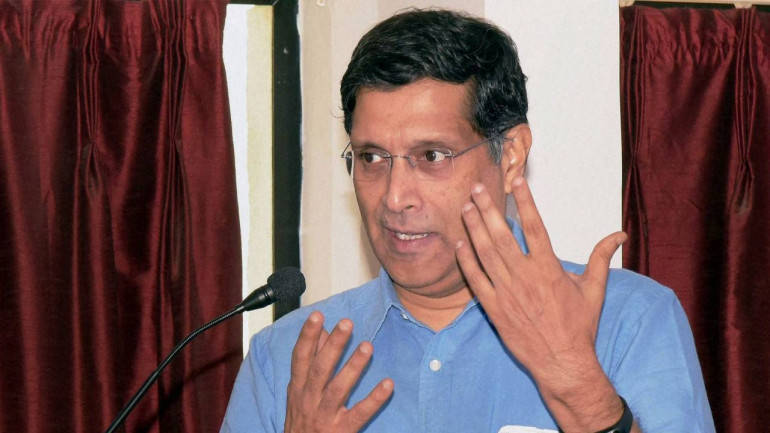The period pertains to both the UPA 2 and NDA 2 regimes.
Former Chief Economic Advisor Arvind Subramanian in a research paper has questioned the government's official GDP growth figures, saying that the country may have grown at an average 4.5 percent in the years between 2011-12 and 2016-17, instead of about the 7 percent average as shown by official data.
The period pertains to both the UPA 2 and NDA 2 regimes.
In the paper, Subramanian, who quit as the CEA in June last year, used 17 "real" indicators such as vehicle sales, industrial production, credit growth and exports and imports, to check for their correlation with GDP figures during the years 2001 and 2017.
While there is a positive correlation between the two between 2001 and 2011, they diverge after that.
India's GDP data has been under scrutiny after the NDA government brought about a few changes in the calculation of GDP growth.
In December 2018, it brought about a new methodology to calculate growth, a move that showed high growth under the NDA years, oddly even during the disruptive years of demonetisation and GST (2016 and 2017). In February 2019, it used the new methodology to backdate the GDP growth, which showed growth during the UPA years had been slower than previously reported.
But Subramanian said he would not focus on the political controversies that have broken out over those, focusing instead on the 2011 base year revision and whether the GDP growth figures released since stand up to scrutiny when compared to other data.
"A variety of evidence suggests that the methodology changes introduced for the post-2011 GDP estimates led to an over-estimation of GDP growth," Subramanian wrote.
The "base year" revision for GDP growth calculation is a routine exercise undertaken by statisticians to account for changes in the economy such as inflation.
On the whole, Subramanian called for improvement in the way GDP data is measured in India.
Growth over-estimates not only undermine India's reputation for record keeping but also lead to serious policy challenges, he wrote. For instance, based on the data, which showed GDP growth faster than it may have been, the RBI may have kept interest rates higher than was needed. Or the government would have attacked the NPA problem with more urgency. Or even the GST collection may have been more impressive than what it appears.
"India must restore the reputational damage suffered to data generation in India across the board— from GDP to employment to government accounts—not just by conferring statutory independence on the National Statistical Commission, but also appointing people with stellar technical and personal reputations," he wrote.
"At the same time, the entire methodology and implementation for GDP estimation must be revisited by an independent task force, comprising both national and international experts, with impeccable technical credentials and demonstrable stature," the former CEA wrote in the paper.
In an op-ed for the Indian Express, he further wrote: "Finally, the question will arise as to my role on this issue while I was CEA. Throughout my tenure, my team and I grappled with conflicting economic data. We raised these doubts frequently within government, and publicly articulated these in a measured manner in government documents, especially the Economic Survey of July 2017. But the time and space afforded by being outside government were necessary to undertake months of very detailed research, including subjecting it to careful scrutiny and cross-checking by numerous colleagues, to generate robust evidence."
















